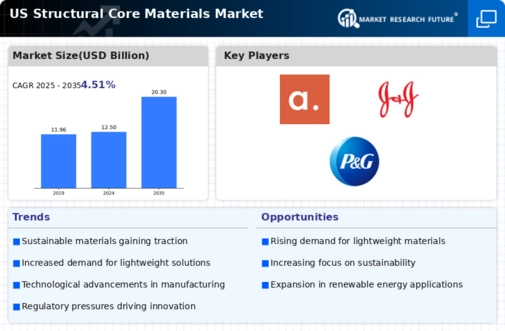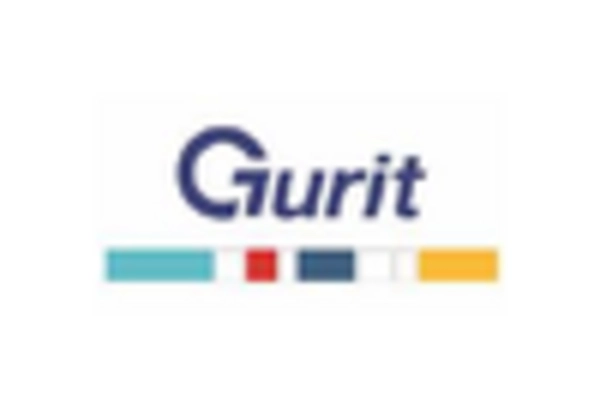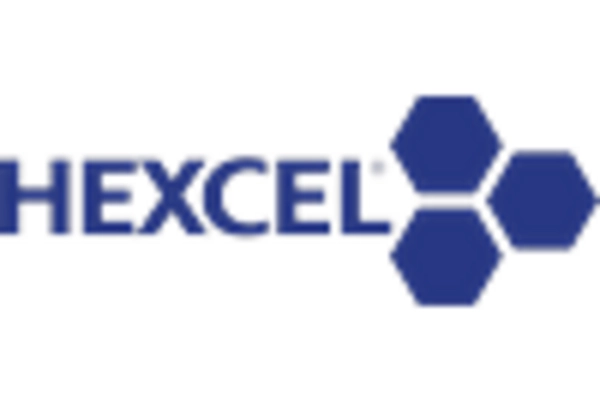Growth in Construction Activities
The structural core-materials market is significantly influenced by the ongoing growth in construction activities across the United States. With urbanization and infrastructure development on the rise, there is an increasing need for durable and efficient building materials. The construction sector is projected to grow at a rate of 5% annually, which directly impacts the demand for structural core materials. These materials are essential for creating lightweight yet strong structures, particularly in high-rise buildings and commercial projects. As architects and builders seek innovative solutions to meet modern design requirements, the structural core-materials market is poised for substantial growth, driven by the need for enhanced performance and sustainability in construction.
Emerging Applications in Transportation
Emerging applications in the transportation sector are driving growth in the structural core-materials market. The rise of electric vehicles (EVs) and advancements in rail and marine transport are creating new opportunities for lightweight and high-strength materials. As manufacturers strive to enhance the performance and efficiency of these vehicles, the demand for innovative core materials is expected to rise. The structural core-materials market could witness a growth rate of around 5% as these applications expand. This trend indicates a shift towards more sustainable transportation solutions, where the role of structural core materials becomes increasingly vital in meeting performance and regulatory standards.
Rising Demand for Lightweight Materials
the structural core-materials market experienced a notable surge in demand for lightweight materials, driven by the aerospace and automotive sectors. These industries increasingly prioritize materials that enhance fuel efficiency and reduce emissions. For instance, the use of composite materials in aircraft construction has been shown to reduce weight by up to 20%, leading to significant operational cost savings. As manufacturers seek to comply with stringent environmental regulations, the shift towards lightweight structural core materials becomes imperative. This trend is expected to propel the market forward, with projections indicating a growth rate of approximately 6% annually over the next five years. Consequently, the structural core-materials market is likely to witness a robust expansion as industries adapt to these evolving demands.
Advancements in Manufacturing Techniques
Innovations in manufacturing techniques are reshaping the structural core-materials market, enabling the production of more efficient and cost-effective materials. Techniques such as additive manufacturing and advanced composite fabrication are gaining traction, allowing for the creation of complex geometries that were previously unattainable. These advancements not only enhance the performance characteristics of core materials but also reduce waste and production costs. As a result, manufacturers are likely to invest in these technologies, which could lead to a market growth rate of around 7% over the next few years. The structural core-materials market stands to benefit from these developments, as they align with the industry's push for improved efficiency and sustainability.
Increased Investment in Renewable Energy
The structural core-materials market is experiencing a boost from increased investment in renewable energy projects, particularly in wind and solar energy sectors. The demand for lightweight and durable materials is critical in the construction of wind turbine blades and solar panel structures. As the U.S. government and private sector commit to achieving renewable energy targets, the structural core-materials market is likely to see a growth trajectory of approximately 8% annually. This trend reflects a broader shift towards sustainable energy solutions, where the performance of structural materials plays a pivotal role in the efficiency and longevity of renewable energy installations.

















Leave a Comment